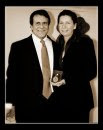There has been a lot of information floating around these days about the use and misuse of Revocable Living Trusts. The purpose of this three-part article is to separate fact from fiction about the use of this estate-planning tool. In Part 1 we will look at the parties to a Revocable Living Trust and in Part 2 we will look at some trust advantages. In Part 3, we will look at when it is appropriate to use a Revocable Living Trust.
A Revocable Living Trust is a popular estate planning tool, because in the right situation, it will enable a person to (1) Avoid probate; (2) Reduce the chances of a guardianship upon incapacity; and (3) Reduce or eliminate estate taxes; (4) Maintain control of assets; (5) State a plan of distribution of assets at the death of the second spouse.
We will talk about these obvious advantages of a Revocable Living Trust in a minute, but for now, lets look at the three parties to a trust:
1. Trustor – Sometimes also referred to as settlor or trust-maker. This is the person who owns the assets and contributed or re-titled all assets to the revocable living trust (“put them in the box”). If Husband and Wife joint own all assets, they would both be Co-Trustors of their joint trust.
2. Trustee – This is the person who manages the assets contained in a trust. Typically the initial trustee is the person who sets up the trust. If Husband and Wife established a Revocable Living Trust, both Husband and Wife would be co-trustees of the Husband and Wife Living Trust. Upon the death of either spouse the other would be the remaining initial trustee.
Upon the death of Husband and Wife, a successor trustee would be named. The successor trustee could be a person, such as the child or children of the Trustor. You can name more than one child as successor trustee. The question of whether this is a good idea has to be decided by you!
Finally, the successor trustee could also be a corporate or institutional trustee, such as a bank trust department. Since corporate trustees are not emotionally tied to any family member, they can be relied on to carry out your wishes contained in the trust. Most banks charge a small fee for this service (usually around 1%) but the fee is not normally charged until they start work, which is after your death or incapacity.
3. Beneficiary – These are the persons that are designated to receive your money and other property at your death. Normally no assets are distributed until after the death of the second spouse. At that time, assets can be immediately distributed to any beneficiary that you have named in the trust. However, if you wish, your assets can be held in trust and can be distributed according to your plan. For example you can state that the money is to be used for a child’s college expenses or held for their retirement.
In tomorrow's blog, we will talk about some trust advantages - see you then!
Subscribe to:
Post Comments (Atom)



No comments:
Post a Comment